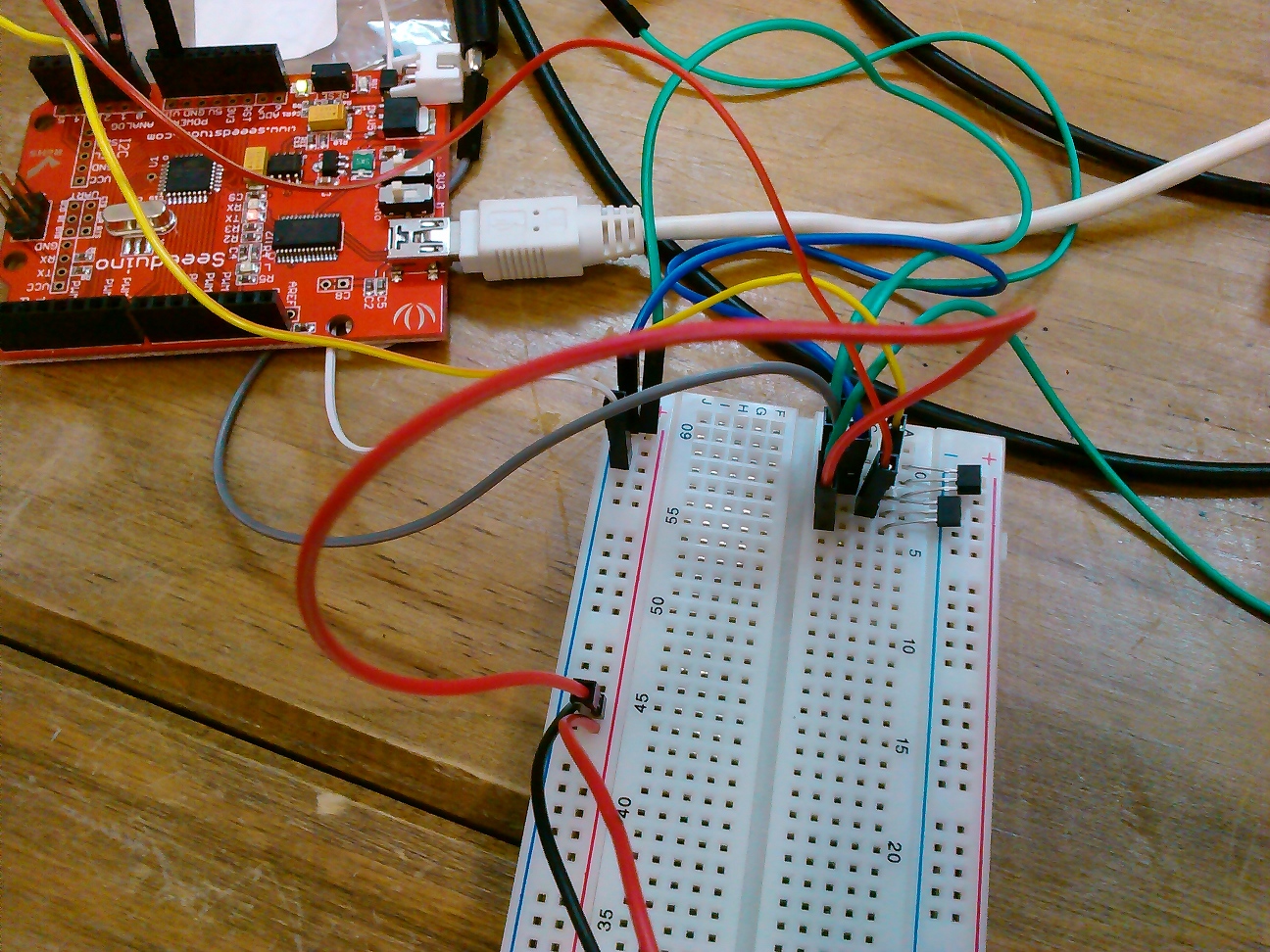We’re starting construction of version 2 of the flotsam tangible programming device, specialised to weaving – and henceforth known as the ‘pattern matrix’. This will be tested during May at our upcoming performance/workshop/residency at Munich’s Museum für Abgüsse Klassischer Bildwerke (Museum of Casts of Classical Sculpture) with the Coding weaves project, and then for later use in Cornwall (more on that part soon).
The first thing we are exploring is removing the need for physical plugs – although I like them a lot, they are problematic for people as it takes time to learn how to align the blocks in the current prototype. In order to get around this, and maintain the cheapness of the programming blocks themselves we’re looking at using magnetism to represent information. We can use blocks with no connections, painted white and black on different sides and detect their orientation and position via a magnet in the centre.
Initially this idea came from thinking about reed switches with Francesca, and playing with mobile phone magnetometers on the UAV project led to us investigating Hall effect sensors (the building blocks of magnetometers). We had a bit of a testing workshop with Andy from the Falmouth University makernow fablab who are helping with construction of this project.
Hall effect sensors allow us to detect the polarity of nearby magnetic fields – and seem to be restricted enough in range that they can be very precise. Even with fairly weak magnets we found we could put the sensors right next to each other (see above) and still determine the difference between two opposed or aligned fields.
For the warp/weft weave pattern structure we only need 1 bit of information to be detected, but for future extensibility for the yarn colour programming setup it’s important to be able to read more (4 bits are encoded in the flotsam blocks).
Our plan is to try putting 4 sensors in a square which adds an intriguing possibility of rotating the blocks to change their meaning, as well as flipping them. The great thing is that this gets very close to tablet weaving in terms of the notation and the actions required. We can also represent all 16 states with only 4 blocks – if negative is 0 and positive is 1, and we read the code as binary clockwise from top left:
Starting state [0,1,5,6] - - + - + - - + - - - - - + - + Rotate clockwise [0,2,10,12] - - - + - + - - - - - - + - + + Horizontal flip [15,11,10,12] + + + + - + - - + + + - + - + + Rotate counter-clockwise [15,13,5,6] + + + - + - - + + + + + - + - + Vertical flip [0,4,5,6] - - - - + - - + - - - + - + - +
Here is Andy’s design for the PCB we’ll use under each of the 25 board locations:


